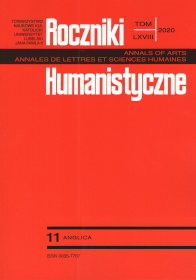“Beautiful And Terrible”: The Ambiguity of the Grid and Suburban Space in D. J. Waldie’s Holy Land: A Suburban Memoir
“Beautiful And Terrible”: The Ambiguity of the Grid and Suburban Space in D. J. Waldie’s Holy Land: A Suburban Memoir
Author(s): Sofia MartinicorenaSubject(s): Language and Literature Studies, Studies of Literature, American Literature
Published by: Towarzystwo Naukowe KUL & Katolicki Uniwersytet Lubelski Jana Pawła II
Keywords: California; space; place; suburbia; D. J. Waldie; post-west; grid
Summary/Abstract: The present paper reassesses D. J. Waldie’s 1996 memoir Holy Land: A Suburban Memoir as an intervention against the jaundiced portrayal of the United States suburbs as a place of alienation. I will argue that Waldie’s account of Lakewood, California, which he presents as a sacred place epitomised by the suburban grid, provides an insightful example of a refusal to comply with certain hegemonic narratives about space in American culture. For this purpose, I will first explore the way Waldie engages with previous critical work about the suburbs. I will next analyse the twofold attitude the grid triggers in the writer and conclude with a reflection upon the potential status of D. J. Waldie as a post-western writer, arguing that his account of suburban life ultimately manages to escape the stereotypes that prevail in the national cultural imaginary, which depict the United States suburbs either as an Edenic realm of upward mobility or as a soulless place of alienation.
Journal: Roczniki Humanistyczne
- Issue Year: 68/2020
- Issue No: 11
- Page Range: 181-193
- Page Count: 13
- Language: English

